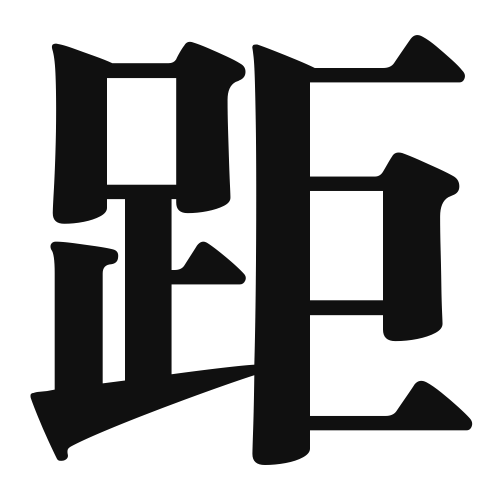1. Overview of Meaning
The kanji “距” (kyou) primarily means “distance” or “to distance oneself.” It is often used to describe physical distances as well as metaphorical distances in relationships or situations.
2. Formation and Radical
Formation of the Kanji: The kanji “距” is a phonetic-ideographic character (形声文字). It combines the radical for “foot” (足) on the left, which relates to movement or distance, and the phonetic component “居” (kyo), which contributes to its pronunciation.
Radical: The radical of “距” is 足 (foot), indicating its connection to movement and distance.
3. Examples of Usage
Common Words and Phrases:
- 距離 (kyori) – distance
- 距離感 (kyori kan) – sense of distance
Example Sentences in Daily Conversation:
- 私たちの距離は少し遠くなった。 (Watashitachi no kyori wa sukoshi tooku natta.) – Our distance has become a bit far.
- 距離感を大切にしたい。 (Kyori kan o taisetsu ni shitai.) – I want to value the sense of distance.
4. Synonyms and Antonyms
Similar Kanji:
- 間 (kan) – This kanji also relates to distance but often refers to the space or interval between two points.
Antonyms:
- 近 (kin) – This kanji means “near” or “close,” representing the opposite of distance.
5. Cultural and Historical Background
Relation to Japanese Culture: The concept of distance is significant in Japanese culture, particularly in social interactions where maintaining an appropriate distance is valued.
Proverbs and Idioms:
- 「距離を置く」(kyori o oku) – This phrase means “to keep a distance,” often used in the context of relationships to indicate a need for space.
